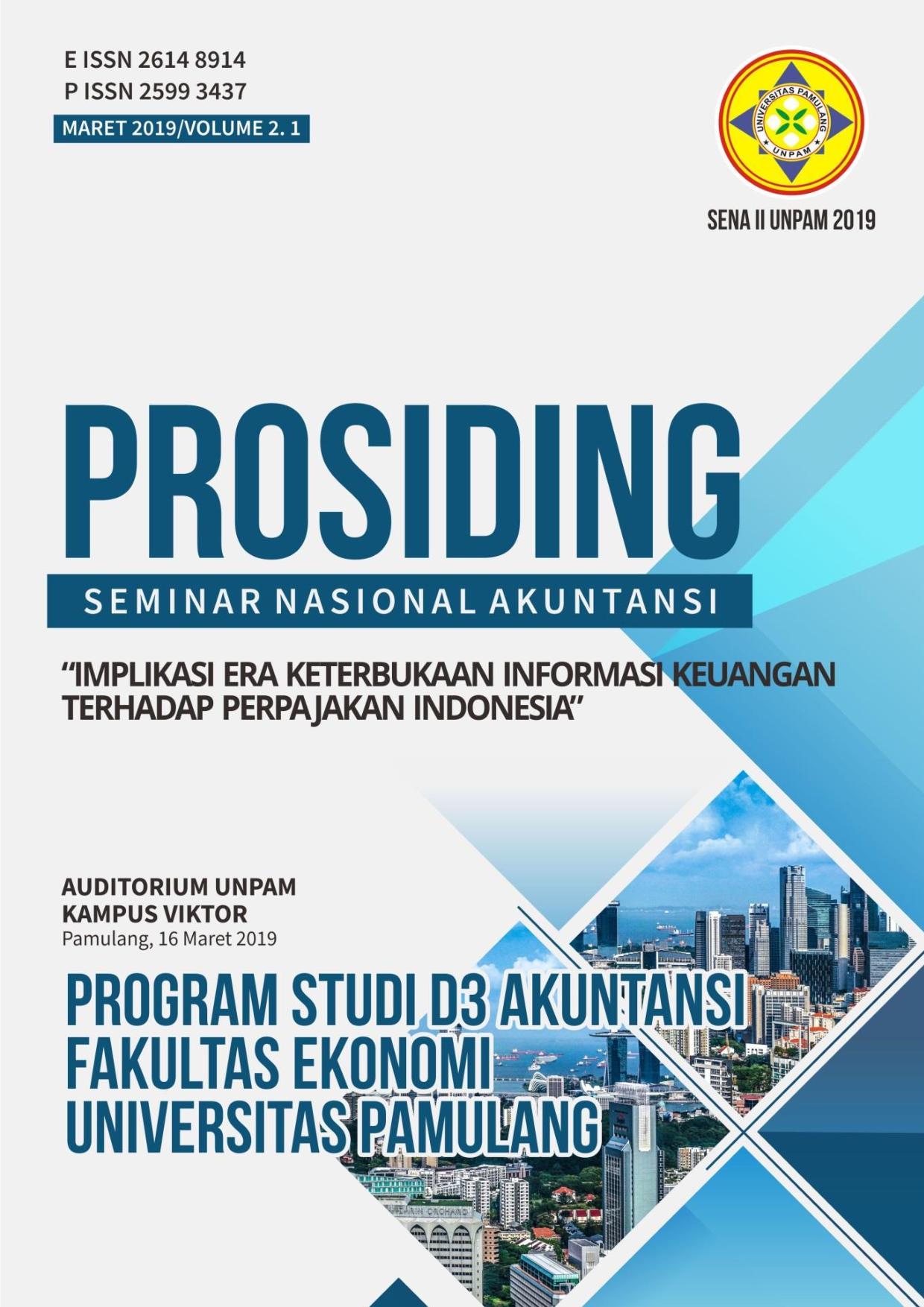TAX AVOIDANCE DITINJAU DARI CAPITAL INTENCITY RATIO, BEBAN IKLAN PERUSAHAAN,KOMPENSASI RUGI FISKAL STUDI PADA PERUSAHAAN PERBANKAN YANG TERDAFTARDI BEI TAHUN 2015- 2017
Abstract
Abstract
The purpose of this study was to examine the effect of capital intencity ratio, company advertising burden and fiscal loss compensation on tax avoidance. This study uses panel data regression with the commond effect (CE) method. The data used in this research is secondary data in the form of data from the financial statements of related companies. The population in this research is banking companies listed on the Indonesia Stock Exchange (IDX). The research sample is a banking company in 2015-2017 with a sampling technique that is purposive sampling. The sampling technique, obtained a sample of 26 banking companies in 2015 2017 with a total sample of 78 banking financial statements. The results of the first hypothesis study show that the capital itencity ratio does not affect the dependent variable, namely tax avoidance. The second hypothesis shows that the company's advertising burden does not affect the dependent variable, namely tax avoidance, and the third hypothesis is that the independent variable compensates for fiscal losses affects the dependent variable, tax avoidance.
Keywords: CIR, Company Advertisment Expenses, Fiscal Loss Compensation, Tax Avoidance
References
Desai, M.A., dan D. Dharmapala. 2006. Corporate tax avoidance and high powered incentives.†Journal of Financial Economics 79 (1): 145–179.
Armstrong, C.S., J.L. Blouin, A.D. Jagolinzer, dan D.F. Larcker. 2013. Corporate Governance, incentives, and tax avoidance. Rock Center for Corporate Governance Stanford University, Working Paper Series No. 136. Diakses dari http://ssrn.com/abstract=2252682.
Nguyen, A. (2015). Product Market AdvertisingandCorporateTaxAggresiveness. Working Paper, Department of Banking and Finance, Monash University.
Annisa, Nuralifmida Ayu dan Lulus Kurniasih. 2012. Pengaruh Corporate Governance terhadap Tax Avoidance. Jurnal Akuntansi dan Auditing, Vol. 8, No. 2, Mei 2012, hal 95-189.
Shafer, W., dan R. Simmons. 2006. Social responsibility, machiavellianism and tax avoidance: A Study of Hong Kong tax professionals. Working Paper No.5.
Commanor, William S dan A. Wilson. 1967. Advertising Market Structure and Performance. Review of Economics and Statistic. No.4/TH.XLIX November: 4230 – 440. Akuntansi Pajak. Yogyakarta: BPFE.
Kurniasih, T., dan M. Sari. 2013. Pengaruh ROA, leverage, CorporateGovernance, ukuran perusahaan, dan kompensasi rugi fiskal terhadap tax avoidance. Buletin Studi Ekonomi 18 (1): 184.
P. Deanna dan F. Meiriska. 2017. Faktor - Faktor yang mempengaruhi Penghindaran Pajak pada Perusahaan Manufaktur di Bursa Efek Indonesia. Jurnal Bisnis dan Akuntansi. Vol. 19. No. 1 Hal 38 – 46.
Ardyansah, Danis dan Zulkiha. 2014. Pengaruh Size, Levergage, Profitabilitas, Capital Intensity Ratio dan Komisaris Independen terhadap Effective Tax Rate (ETR). Diponegoro Journal of Accounting.Vol.3, No.2, hlm 1-9
Sugiyono. 2012. Metodologi Penelitian Bisnis. Bandung: Alfabeta.
Suandy, Erly. 2011. Perencanaan Pajak. Salemba Empat. Jakarta.
Harnanto (2003). Akuntansi perpajakan. Yogyakarta : Penerbit BPFE
Muzakki, M. R., & Darsono, D. (2015). Pengaruh Corporate Social Responsibility dan Capital Intensity Terhadap Penghindaran Pajak (Studi Empiris pada Perusahaan Manufaktur yang Terdaftar pada Bursa Efek Indonesia tahun 2011-2013). (Doctoral dissertation, Fakultas Ekonomika dan Bisnis).
Fatmawati & Solikin. Pengaruh Karakteristik Perusahaan dan Beban Iklan Terhadap Tindakan Penghindaran Pajak Pada Perusahaan Manufaktur. 2017. Jurnal Substansi. Vol. 1. No. 1
Muzakki & Darsono. Penaruh Corporate Social Responsibility dan Capital Intencity Ratio terhadap Penghindaran Pajak. 2015. Diponegoro Journal Of Accounting. Vol. 4. No. 3 Hal. 1 – 8.

